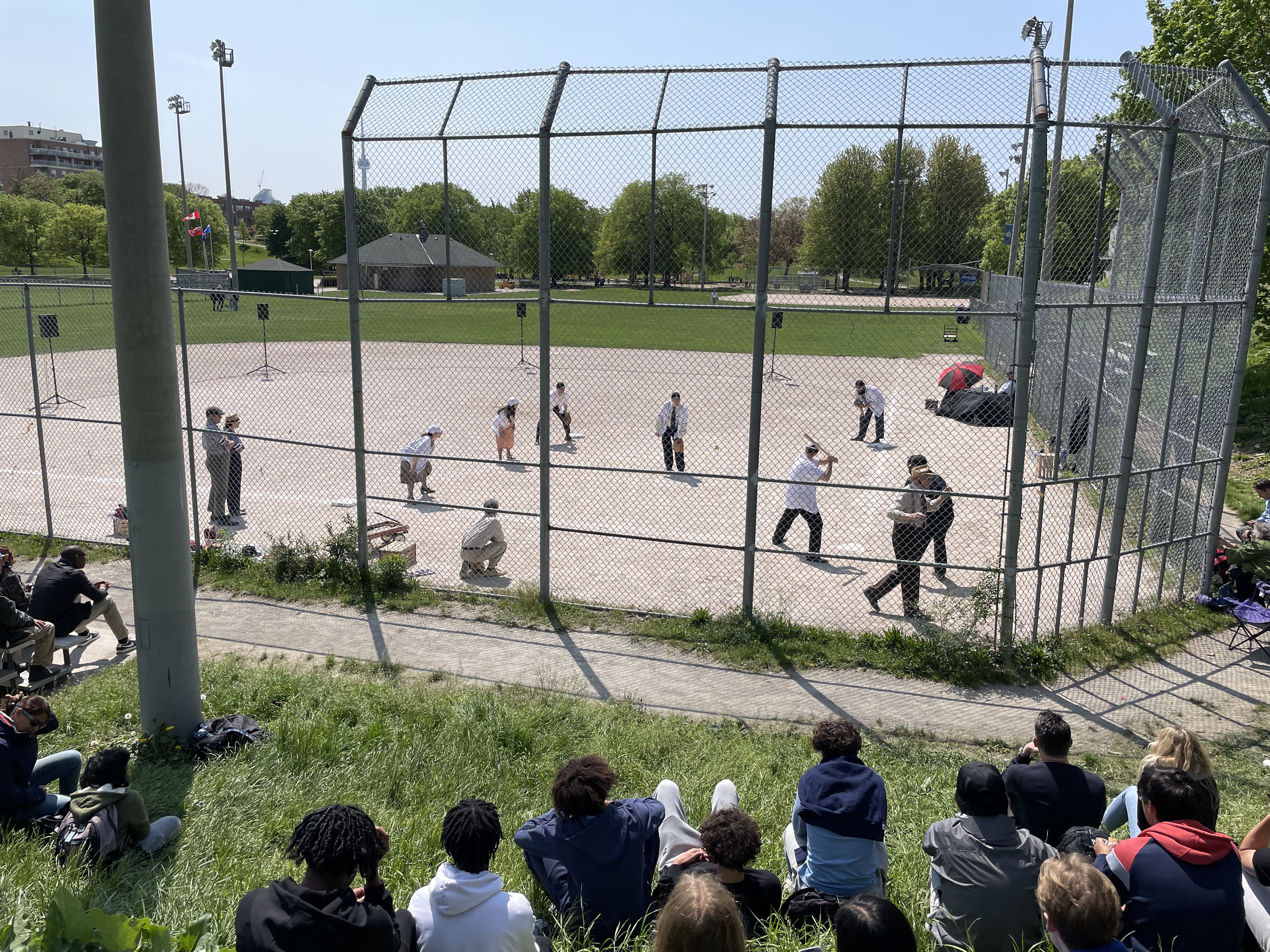A new immersive play is transporting students back to the Toronto of 1933 to teach them about the infamous Christie Pits riot, which saw Jews and Italians battling antisemitic Protestants as a hours-long fight broke out at a baseball game.
The idea to make a show about the event first came from Joe Rosenthal, whose son Sam co-founded The Hogtown Collective, which produced The Christie Pits Riot. The elder Rosenthal knew his son’s theatre company specialized in historical stories about Toronto, and he suggested the riot as a good subject.
The Hogtown Collective first produced a four-part podcast series about the riot, and Sam Rosenthal thought the project would likely end there.
“The dream was to get it done live, but I didn’t think it could happen because it’s such a huge show to mount,” he said.
However, the Toronto District School Board was searching for educational programming to commemorate the riot’s 90th anniversary, and they chose the Hogtown Collective for the opportunity.
“This exemplary, joint work by two of our TDSB heritage committees (the Italian and the Jewish committees) helps build bridges, break down stereotypes, and promote empathy and respect between different groups of students and communities by demonstrating our commonalities and historical support for each other,” said TDSB chair trustee Rachel Chernos-Lin.
The play, which takes place in the same ballpark as the original event, transports the audience to Toronto in 1933, introducing them to the simmering prejudices that led to the riot. It is centred on Joe Rosenthal’s family, who exemplify the racial tensions that affected Jewish Torontonians from all sides: from their fellow Torontonians, from public institutions like the police and the mayor’s office, and from the news coming over about Hitler’s rise in Germany.
The simmering tensions came to a head on Aug. 16, 1933, at Christie Pits Park. After a community baseball game, members of the antisemitic Pit Gang unfurled a large banner with a swastika painted on it. Some Jewish people who were present and expecting such an action tore down the banner, and six hours of street fighting ensued. The Jews and Italians fought together on one side, with Protestants on the other.
The play shows how some Jewish people prepared for the eventual confrontation. One of the main characters spends the days leading up to the riot collecting allies for the brawl, sure that violence would erupt at any moment.

For a city that was known as “Toronto the Good” at the time, it was a rude awakening for many about the true nature of their city. According to Sam Rosenthal, although Toronto has come a long way since then, the lesson is still relevant 90 years later.
“The goal of this piece… was to show all the students and people who don’t know about the riot what it was, and how it happened in Toronto, and how quickly it can happen again,” he said. “We want to really make it clear that we live in a wonderful diverse city, and that we’re grateful for it, but we also have to remember these things happen, and so we have to continually find ways to work together.”
Joe Rosenthal was born a year after the riot, but he grew up in the neighbourhood at a time when overt antisemitism was still commonplace in the city. He said it was important to teach people about the history of their city so that they would learn to look at the world around them with a more critical eye.
“People have no clue. Why would you know what’s going on if you didn’t live it or read it or were told about it? I think it’s so important, otherwise we all go along… and you don’t know what’s happening if these things aren’t brought to your attention,” he said.
“For many people, it was pretty tough. The Jewish crowd had a tough time. I mean, how would you like to walk into a store and see a sign saying, ‘Jews and dogs not allowed?’”
He also thought the play did a great job in evoking the sentiments and emotions of the era.
“It was so well done, I think that I could watch that scene a dozen times and still feel the power that was going on,” he said. “I mean, if you can imagine a riot in a city going on for hours, people beating the shite out of each other, it’s unimaginable. It’s unimaginable.”
About 5,000 students are expected to see the play by the time the run ends on June 16. It runs twice a day from Tuesdays to Fridays, with shows at 10 a.m. and 1:15 p.m., and everyone is welcome to drop by the park at Christie and Bloor streets for a showing.
